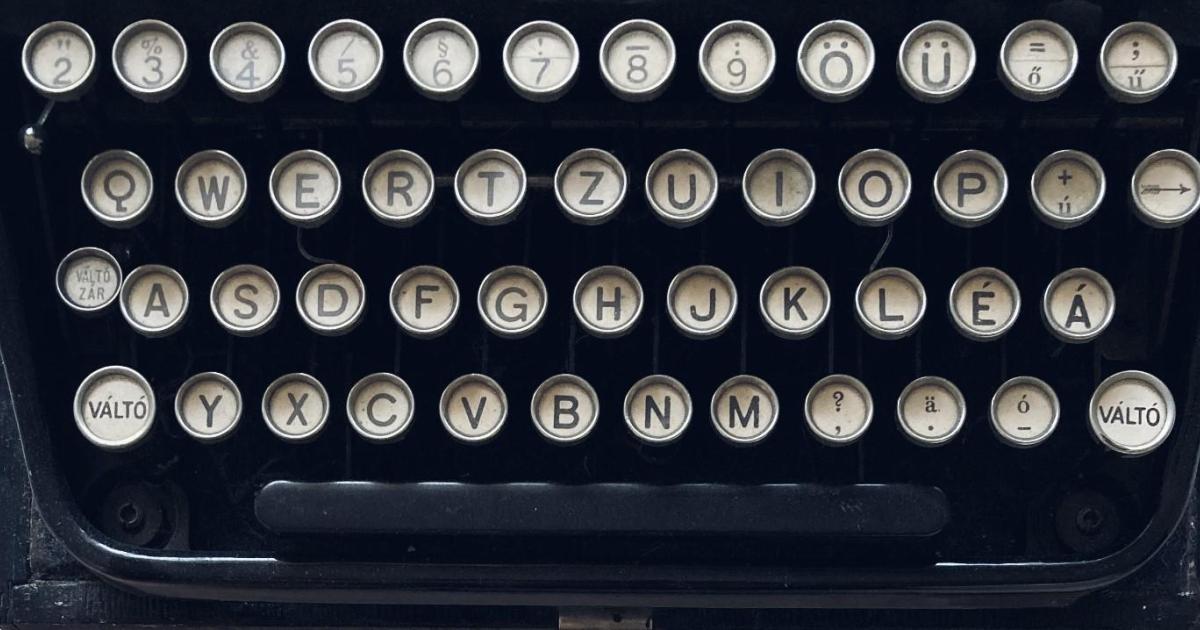
How Much Invisible Work Goes into a Book?
 13 min
13 min
How Much Invisible Work Goes into a Book?
Workshop Diary 10
Translator: Austin Wagner
This is my final workshop diary entry for this series; soon I’ll ride off into the sunset. When I set out on this project, I told everyone about it: “it’ll be great, ten pieces I get to write about not writing.” I was obviously exaggerating, but still, I really didn’t work on anything longer during the process. I did a lot of thinking, and eventually decided not to launch into the series with a pre-prepared conception. I’m not good at planning months in advance, there’s no guarantee that what interests me in October will still interest me in February, and I didn’t want to get bored of the whole thing. Instead I left myself plenty of wiggle room so I could always work with whatever I was obsessing over at the time. And besides, thinking this much about writing is practically already writing… right?
Looking back now, a cohesive thread did in fact shape: most of the texts strove to disperse the mystical fog surrounding writers and writing. I don’t like the image of the unapproachable, inaccessible writer. The depiction of writing as an impenetrable, magical process. What I do like is when a writer is human, when writing is no more special than electrical engineering. This is important to me because as a beginner, I encountered tons of guilt-tripping stereotypes about what “A Real Writer” is like. Even when my first two novels came out I shied away from the limelight, I didn’t feel like I fit the image of a writer, I didn’t want to squeeze myself into a box in which I don’t belong.
And it turned out I don’t even have to. Nothing comes crashing down if we do things differently. There are all sorts of writers, just like there are all sorts of any other group of people.
There are plenty of things I would have loved to write about – from day one I’ve been gathering my strength for a piece about how mental health and mental well-being are one of a writer’s tools, but how we don’t reinforce that image; I would have gladly written about the research I’ve been doing for a novel, but I didn’t want to give too much away. I finally decided that this entry should be about something else, not writing, and not the writers who get all the attention anyway – it should be about the vast amount of invisible work, about all the people who work on a book and get hardly any recognition.
Creating a manuscript is a lonesome task. Turning it into a book takes a village.
I’d like to take you on my subjective journey through this process, as a writer sees it; the folks working in publishing could tell you even more.
Several people have had their hands on a manuscript before it ever reaches the publisher. I usually ask eight to ten advance readers for their opinion, among them friends, colleagues, everyday readers, or experts regarding the given theme of a book. Their initial feedback is the first mirror held up to what I’ve spent years working on, it tells me whether or not it’s meaningful. I’m just as happy with simple emotive comments – this was boring; this surprised me; I wanted to beat this character to death with a baseball bat – as with more analytical insights. And of course I only send a manuscript to people who don’t sugarcoat their feedback, I don’t need ra-ra cheerleaders. The feedback could be logical, it could call out something that’s missing, etc. Sometimes it leads to drastic measures: one time I wrote an entirely new novel one night before the deadline, all because advance readers’ feedback finally showed me what the problem was. Another time, even though someone hated the end of a story, I knew I would stick with it; their opinion was still useful, I at least knew what to expect from the public, and I could consciously assume the risk of people not liking it.
Only after the advance readers does the text go to the editor. This is painstaking work, there’s something intimate about it; besides me, it’s the editor who goes deepest into the story. I worked with Csilla Kleinheincz on my volumes. She loves going through everything methodically, meticulously, and because that’s important for me as well, I think we make a good pair. Maybe this is the “least invisible” work, though there are many who think we sit there and argue over commas and conjugations. What we actually do is check every single nut and bolt to make sure everything is in its place. It’s my editor’s thankless job to slap my hand away when I want to set the text ablaze. She patiently pries my fingers from the gasoline canister; sometimes you need to double check a writer’s nuts and bolts too.
Cover design is one of the publisher’s more eye-catching tasks, but there’s a great deal of misunderstanding about it. People are always asking me what kind of cover I envision for a future book, and I always answer, nothing. Writers aren’t designers, we can’t think with a designer’s mind, we don’t know what works visually and what doesn’t. We stack words, not pixels. I intentionally go into the design process with zero expectations, I curiously wait to see what the designer latched on to – Vince Szabó has designed all my book covers, and they’re a thousand times more striking than anything I could’ve come up with. The graphic designer doesn’t usually read the book, they just get a summary, maybe an excerpt. After all, they do need to design a cover, including typography, which is in keeping with the topic, mood, and target audience of the book.
Readers might even notice the proofreader, but only if the proofreading was badly done. I’ve never read a review where someone said wow, the proofreading in this book was so beautiful. Everybody notices the typos, but the expectation is that they’re not there. The work is invisible so long as it is immaculate. A book will usually undergo two rounds of proofreading, one before typesetting, and one after, where they’re also looking for typesetting errors. And speaking of typesetting, that’s another area that doesn’t get a lot of attention if it’s done well. Beyond just the layout of the text, this entails every element of the text block, from the table of contents to chapter headings, which can sometimes be completely bonkers: I once made up imaginary physics equations for one of my novels, I wanted them to be scary enough to make university students shit their pants, but I could only sketch them on paper. It was my mathematician brother who programmed them to look the way they should, then the technical editor who made sure they meshed well with the rest of the book. Three equations, three little lines many readers probably glossed over, and I won’t say how many days it took to pull together.
What kind of paper should be used? Should it be hardcover, softcover, paperback? Should it be laminated, should it have pop-outs, should it come with a bookmark? How big should it be? How do the visual elements match (or not match) the author’s other books, the publisher’s image? An absurd number of decisions to be made before finally sending the file to the printer – the editor prying the author’s fingers from the gasoline canister more than once. Sadly I know far less about the printing process than I would like, but I’m really hoping someone will take me to see a proper printing (my birthday’s in June, just saying).
The next time I see the book – books, by this point – they’re stacked on pallets, wrapped up tight, and headed to a bookstore near you (it’s hard to even fathom the people and logistics that go into this part, and I’ve at least seen the bigger publishers’ warehouses, how orders are processed, the endless piles of books lining a hall that could survive the apocalypse). It’s here that I’ve seen first-hand the thankless invisible work: when I would sign and dedicate pre-orders, readers would write to me thank you for all your hard work, and I had to tell all of them that it’s the warehouse workers who deserve the credit, they’re the ones who sorted the orders, inserted my notes into the right copies, told me whose name went where, helped me all the way through so all I had to do was sign the paper. It wasn’t me working for it.
Following publication, it’s marketing that has the biggest task, and while everyone thinks they’re just mailing out review copies all day, this job is a thousand times more complicated. They have to read almost every book front to back in order to understand who the target audience is, who it’s recommended for, how they should communicate about it. They have to manage correspondence, organize however many events, be there at book signings in case anything comes up (and pray the author isn’t late to said book signing).
And overseeing every decision is, of course, the publishing manager. They hold the team together, try to navigate between the economics and the aesthetics – there’s even more invisible work here: financial, office management, customer service, book fair stands, where does it end.
In the interest of being comprehensive, and since we’re already talking about what happens after publication, it’s not just publishing house employees who contribute to a book: journalists, critics, editors, librarians, cultural organizers, book store clerks, university research groups, literary content creators, goodreads.com members, book clubs… and I could go on. They are all unwittingly part of a book’s journey, talking about it, recommending it, or lending it to a friend.
And finally, there’s the special situation when the life of a book ripples out even further: these workshop diaries and prose pieces were part of a project for Panodyssey’s website, and were translated by Austin Wagner in none-too-invisible terms, for which I am infinitely grateful.
I wanted to highlight all of this because even the greatest of writing would be far less great without the work of all these people. I don’t think I need to call attention to how underpaid those in the cultural sphere are – their passion for their work, the weekend events, the overtime, the economic struggle. Recognition is the least we can give them.
I love those photos they take on film sets during shooting, the ones that show the entire crew, from gaffers to make-up artists to hairdressers, all on set together. Such photos aren’t made when it comes to books, the process is too stretched out for that, but I at least wanted to leave you with an imagined tableau – to make the invisible more visible.









 English
English
 Français
Français
 Deutsch
Deutsch
 Italiano
Italiano
 Español
Español



 Contribuisci
Contribuisci
















 Puoi sostenere i tuoi scrittori preferiti
Puoi sostenere i tuoi scrittori preferiti






Andras Varga 2 anni fa
Important article. In the usual discussions it seems that majority of the public is not aware (or always forgetting) the collaborative nature of books or even movies.